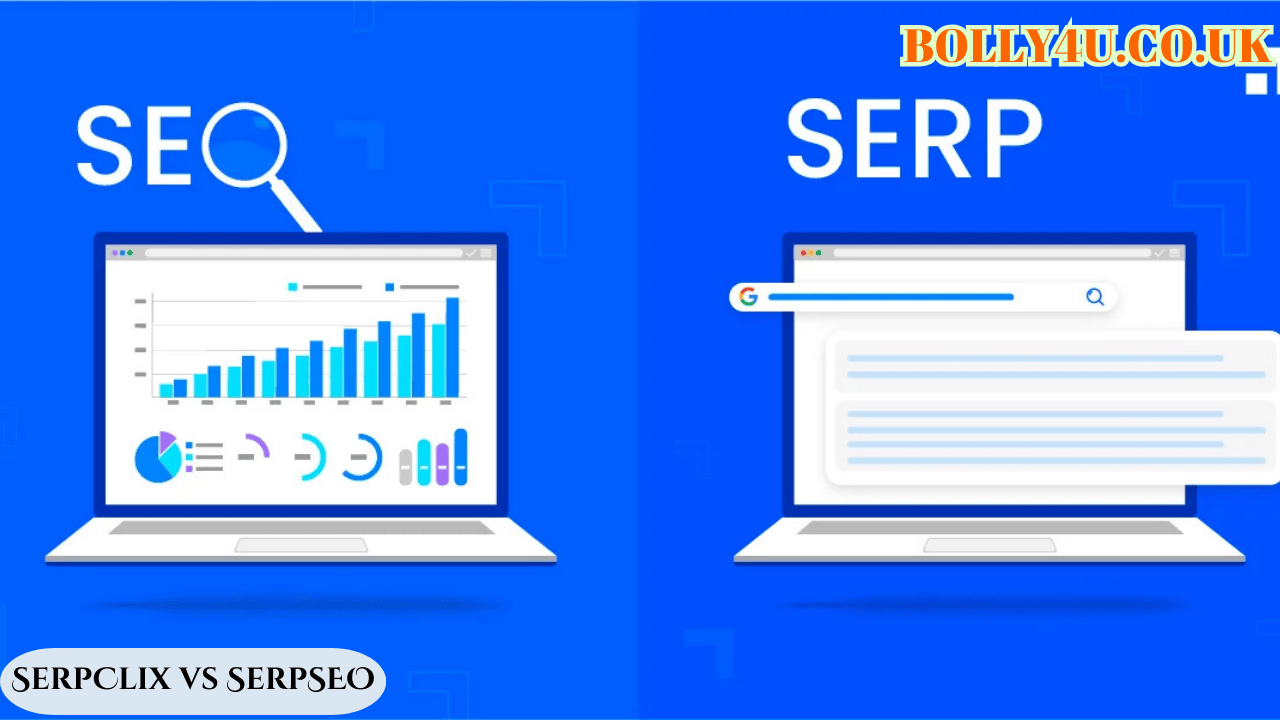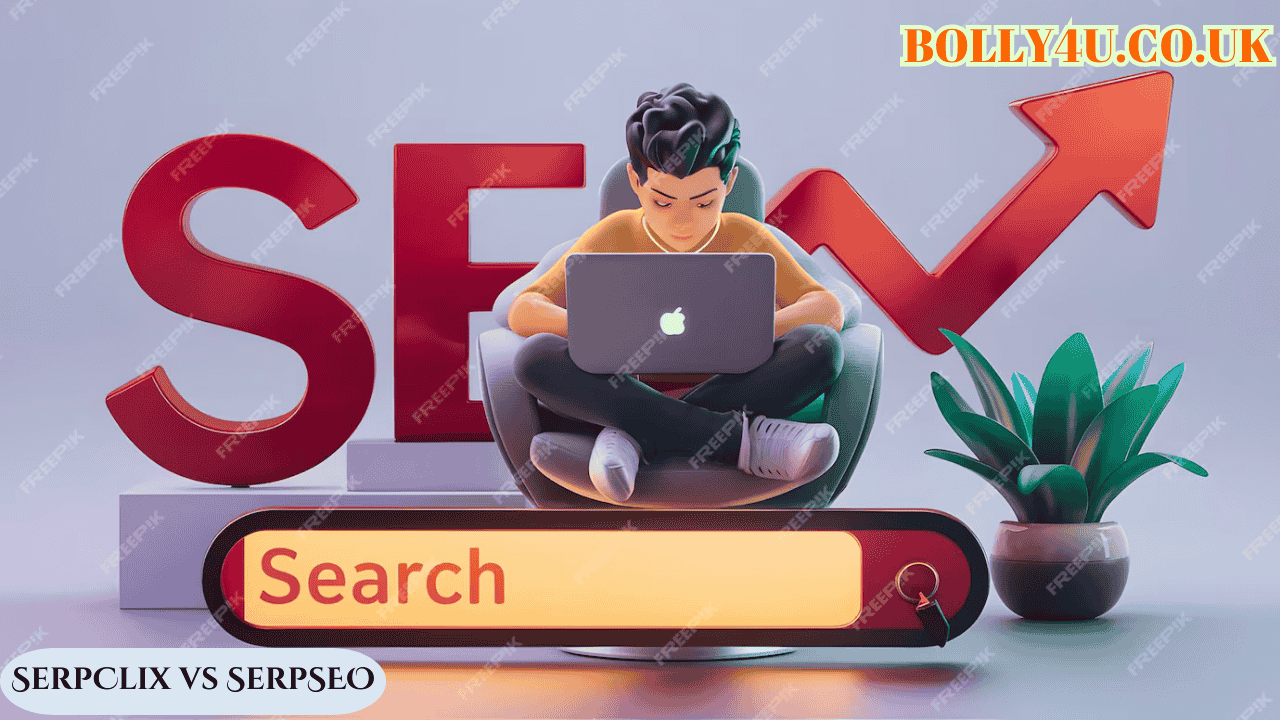SerpClix vs SerpSEO: A Detailed Comparison of Two Powerful SEO Tools

When it comes to improving search engine rankings, SEO professionals and digital marketers are always on the lookout for effective tools that can enhance organic visibility. Among the various strategies used to boost rankings, click-through rate (CTR) manipulation has gained traction, with tools like SerpClix vs SerpSEO leading the way. However, these two platforms operate differently, each with its advantages and limitations.
This comprehensive guide will provide a detailed comparison of SerpClix vs SerpSEO, covering their features, working mechanisms, pricing, effectiveness, and potential risks. By the end, you’ll have a clear understanding of which tool aligns best with your SEO strategy.
1. Understanding SerpClix: A Manual Click-Based SEO Tool
What is SerpClix?
SerpClix is a pay-per-click (PPC) platform that connects website owners with real users who manually search for specific keywords and click on the desired URL in Google’s search results. Unlike automated bots, SerpClix relies on human-driven interactions, making it a safer option for improving rankings without violating search engine guidelines.
How Does SerpClix Work?
-
Advertisers Submit Orders – Users specify keywords, target URLs, and geographic locations.
-
Real Users Perform Searches – SerpClix workers manually search for the keyword and click on the designated link.
-
Natural Engagement Signals – The click is followed by organic dwell time, reducing bounce rates.
-
Boosted CTR & Rankings – Over time, increased CTR signals to Google that the page is relevant, potentially improving rankings.
Key Features of SerpClix
✅ Human Clicks Only – No bots, reducing the risk of penalties.
✅ Geo-Targeted Clicks – Supports country-specific ranking improvements.
✅ Budget-Friendly – Pay only for the clicks you need (typically 0.05to0.50 per click).
✅ No Long-Term Contracts – Flexible usage with no mandatory subscriptions.
Pros of SerpClix
✔ Safe & Compliant – Manual clicks align with Google’s guidelines.
✔ Improves CTR Naturally – Mimics real user behavior.
✔ Good for Local SEO – Can target specific countries or regions.
Cons of SerpClix
❌ Slower Results – Limited by human availability.
❌ Not Scalable for Large Campaigns – Difficult to generate thousands of clicks quickly.
❌ Requires Ongoing Management – Must manually set up new orders.
2. Understanding SerpSEO: An Automated SEO Ranking Tool

What is SerpSEO?
SerpSEO is an automated SEO tool designed to simulate user behavior, including searches, clicks, and dwell time. Unlike SerpClix, it uses proxies and virtual browsers to generate search activity, allowing for faster and more scalable ranking improvements.
How Does SerpSEO Work?
-
Automated Search Simulation – The tool performs searches using rotating IPs to avoid detection.
-
Behavioral Engagement – Simulates realistic actions like scrolling, clicking, and dwell time.
-
Rank Tracking – Some versions include built-in SERP tracking to monitor progress.
-
Massive Scalability – Can execute hundreds or thousands of searches per day.
Key Features of SerpSEO
✅ Automated Clicks – Faster execution than manual methods.
✅ Behavioral Signals – Mimics real user interactions (dwell time, multiple clicks).
✅ Proxy Support – Uses residential or datacenter proxies to avoid detection.
✅ High Volume Capability – Ideal for aggressive SEO campaigns.
Pros of SerpSEO
✔ Faster Results – Can generate hundreds of clicks in a short time.
✔ Scalable for Large Projects – Suitable for competitive keywords.
✔ More Advanced Features – Some versions include rank tracking and analytics.
Cons of SerpSEO
❌ Higher Risk of Penalties – Automation can trigger Google’s anti-spam filters.
❌ Proxy Quality Issues – Low-quality proxies may lead to inconsistent results.
❌ Less Transparent – Some providers may not disclose their methods fully.
3. SerpClix vs SerpSEO: Key Differences Compared
| Feature | SerpClix | SerpSEO |
|---|---|---|
| Click Type | Manual (Real Users) | Automated (Bots/Proxies) |
| Speed | Slower (Human-dependent) | Faster (Mass execution) |
| Safety | Low risk (Google-compliant) | Higher risk (May trigger penalties) |
| Scalability | Limited (Manual process) | High (Unlimited clicks possible) |
| Cost | Pay-per-click (0.05−0.50 per click) | Subscription-based (Varies) |
| Best For | Safe, long-term SEO | Fast, aggressive ranking boosts |
4. Which One Should You Choose?
Choose SerpClix If:
✔ You prioritize safety and compliance with Google’s guidelines.
✔ You need localized SEO improvements (country-specific clicks).
✔ You prefer a pay-as-you-go model with no long-term commitments.
Choose SerpSEO If:
✔ You need quick results for competitive keywords.
✔ You’re running large-scale SEO campaigns requiring thousands of clicks.
✔ You’re comfortable with a higher risk for potentially faster rankings.
5. Potential Risks & Considerations
SerpClix Risks:
-
Slow progress for highly competitive niches.
-
Limited availability of users in some regions.
SerpSEO Risks:
-
Google penalties if detected (especially with low-quality proxies).
-
Unpredictable results if automation is too aggressive.
6. Final Verdict: SerpClix or SerpSEO?

Both SerpClix and SerpSEO have their place in an SEO strategy, but the best choice depends on your goals:
-
For long-term, white-hat SEO → SerpClix (safer, manual clicks).
-
For rapid ranking boosts → SerpSEO (faster, but riskier).
A hybrid approach (using SerpClix for stability and SerpSEO for aggressive keywords) could be optimal, but always monitor rankings and adjust strategies based on performance.
7. The Impact of Click Behavior on SEO Rankings
One of the most critical factors in the SerpClix vs SerpSEO debate is how each tool influences search rankings through user behavior. Google’s algorithm increasingly prioritizes user engagement signals, such as click-through rates (CTR), dwell time, and bounce rates. SerpClix, with its human-driven clicks, naturally enhances these metrics since real users spend time on the site, reducing bounce rates and increasing session duration. On the other hand, SerpSEO’s automated approach can simulate these behaviors but may lack the consistency of genuine user interaction. If Google detects unnatural patterns, such as identical dwell times or repetitive click paths, it could flag the activity, negating any ranking benefits.
8. Cost Efficiency: Which Tool Offers Better Value?
When comparing SerpClix vs SerpSEO from a pricing perspective, the choice depends on budget and campaign scale. SerpClix operates on a pay-per-click model, typically ranging from 0.05to0.50 per click, making it ideal for small businesses or targeted campaigns. However, scaling up can become expensive due to manual labor costs. SerpSEO, meanwhile, often uses subscription-based pricing, allowing unlimited clicks within a set timeframe. This makes it more cost-effective for large-scale operation, but riskier if Google penalizes the site. Businesses must weigh short-term affordability against long-term sustainability when deciding between these tools.
9. Ethical Considerations and Long-Term SEO Health
A key distinction in the SerpClix vs SerpSEO comparison is ethical compliance. SerpClix adheres closely to white-hat SEO practices, as it relies on real users without deceiving search engines. This minimizes the risk of penalties and ensures sustainable growth. SerpSEO, while effective, treads into gray-hat territory due to automation. Overuse could lead to manual actions from Google, wiping out ranking progress. SEO professionals must ask: Is a quick boost worth potential long-term damage? For businesses prioritizing longevity, SerpClix is the safer bet, while those willing to gamble for rapid gains might prefer SerpS, O, with caution.
10. Future-Proofing Your Strategy: Adapting to Algorithm Updates
Google’s algorithms are constantly evolving, and tools that work today might falter tomorrow. In the SerpClix vs SerpSEO matchup, SerpClix’s human-centric approach is less likely to be affected by algorithm updates targeting bot traffic. SerpSEO, however, may require frequent adjustments to proxy quality and behavioral patterns to avoid detection. Forward-thinking marketers should consider diversifying their tactics—using SerpClix for foundational ranking stability while reserving SerpSEO for short-term competitive pushes. Combining these tools with high-quality content and backlinks creates a resilient SEO strategy that withstands algorithmic shifts.
Final Thoughts
The SerpClix vs SerpSEO debate boils down to a trade-off between safety and speed. SerpClix offers a compliant, steady path to better rankings, while SerpSEO delivers rapid results at higher risk. By understanding their strengths and limitations, you can tailor your approach to align with business goals, ensuring sustainable search engine success.
Also Read: Top Site to Buy Instagram Followers and Likes in Canada


